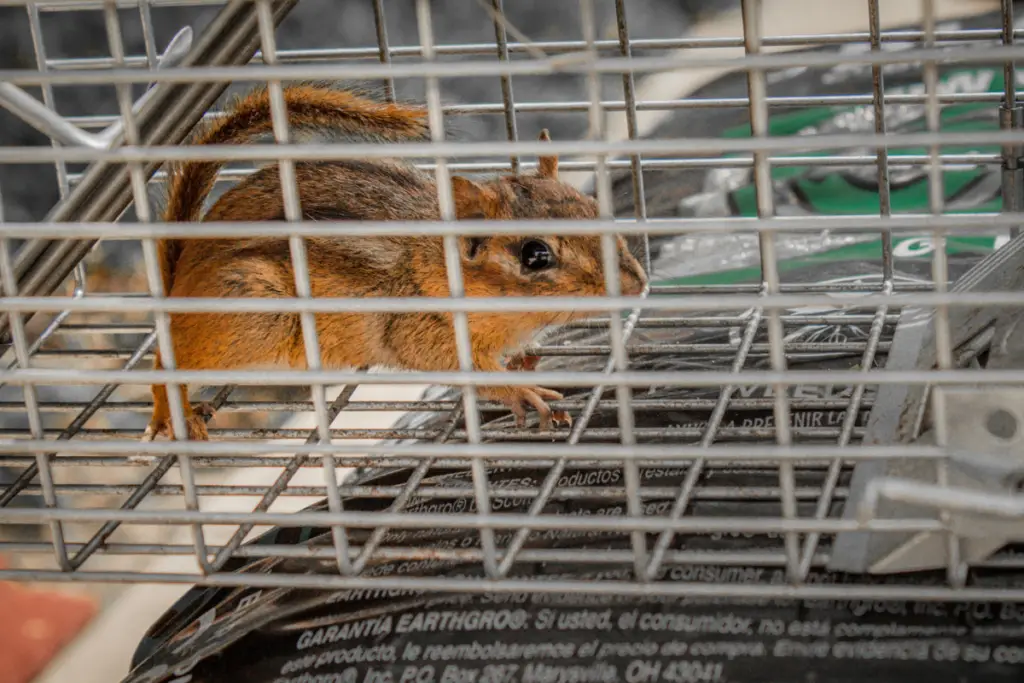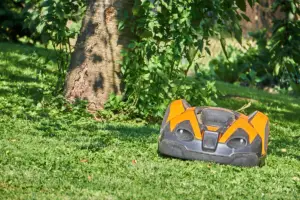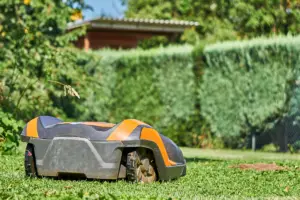Chipmunks are cute little creatures that can cause a lot of damage to gardens, yards, and homes.
They are known for their ability to burrow and chew through wires, insulation, and other materials.
To prevent this damage, many people turn to chipmunk traps to catch and remove these critters from their property.
There are several types of chipmunk traps available, including humane live traps and lethal traps.
Humane live traps allow for the safe capture and release of chipmunks, while lethal traps are designed to quickly and efficiently kill the animal.
Both types of traps can be effective, depending on the situation and the preferences of the user. It is important to use traps correctly and safely to avoid injury to both the user and the chipmunk.

Table of Contents
Understanding Chipmunks
Chipmunks are small, ground-dwelling rodents that are commonly found in North America. They belong to the squirrel family and are known for their striped fur and bushy tails.
Chipmunks are active during the day and are often seen darting around in search of food.
Physical Characteristics
Chipmunks are small in size, measuring between 5 to 6 inches long and weighing only a few ounces. They have a distinctive appearance, with stripes running along their backs and sides.
Their fur color ranges from reddish-brown to grayish-brown, and they have white bellies. Chipmunks have large eyes and ears, which help them detect predators.
Behavior
Chipmunks are active throughout the year, but they are most active during the spring and summer months.
During this time, they spend most of their time foraging for food and gathering supplies for their nests.
Chipmunks are omnivores and eat a variety of foods, including seeds, nuts, fruits, insects, and small animals.
Habitat
Chipmunks are found in a variety of habitats, including forests, woodlands, and suburban areas.
They prefer habitats with plenty of cover, such as fallen logs, brush piles, and rock piles. Chipmunks also require access to water sources, such as streams or ponds.
Reproduction
Chipmunks breed twice a year, once in the spring and once in the summer. Females give birth to litters of four to five young, which are born blind and hairless.
The young are weaned at around six weeks of age and become independent at around eight weeks old.
Overall, understanding the behavior and habitat of chipmunks is important when trying to trap them.
By knowing their habits and preferences, it is possible to choose the right trap and bait to catch them effectively.
Types of Chipmunk Traps
There are two main types of chipmunk traps: live traps and lethal traps.
Live Traps
Live traps are designed to catch chipmunks without harming them. These traps allow you to capture the animal and then release it far away from your property.
Live traps are ideal for those who want to remove the chipmunks from their property without causing them any harm.
One of the best live traps for catching chipmunks is the Small Single-Door Cage Trap. This trap is designed with a spring-loaded, locking trap door.
The gravity action door and solid handle make the trap perfect for professional trappers. This trap is also humane, allowing you to catch the chipmunk without harming it.
- Humane Rat Rodent Trap - After catching them, you can release them at any time. Product Size: 10.5 x 5.5 x 4.5. If you want to catch a big one, please choose a bigger size.
- Light Weight Galvanized Steel - Sturdy and Durable, the finest wire mesh wont be bitten open by those small animals teeth. Its not fit for opossum or big squirrel, since they can bite the trap broken and escape.
- High sensitive trigger mechanism - Once the trigger is touched, the door will be auto-locked immediately and keep the critters in it.
- Exclusive Patented Design - Innovative, efficient and easy to use, its widely recognized by the users. Rat trap that work for chipmunk, rat, mouse and other rodent animal.
- Premium Customer Service - If its damaged in half a year, please contact us and show us the pictures, we will send you a replaceme
Prices pulled from the Amazon Product Advertising API on:
Product prices and availability are accurate as of the date/time indicated and are subject to change. Any price and availability information displayed on [relevant Amazon Site(s), as applicable] at the time of purchase will apply to the purchase of this product.
Lethal Traps
Lethal traps are designed to kill the chipmunks. These traps can use poison to kill the animals, but they raise moral issues.
From a moral point of view, live traps can be ideal. However, if you have a serious chipmunk infestation, lethal traps may be necessary.
One of the most effective lethal traps is the snap trap. This trap uses a spring-loaded bar to kill the chipmunk instantly.
Snap traps are easy to use and can be very effective at controlling a chipmunk infestation.
Overall, the type of trap you choose will depend on your personal preferences and the severity of your chipmunk infestation.
If you want to remove the chipmunks from your property without causing them any harm, a live trap is the best option.
If you have a serious infestation and need to get rid of the chipmunks quickly, a lethal trap may be necessary.
- Take Back Your Home from mice, rats, or other rodents with the powerfully effective tunnel rat traps by Kat Sense. Designed to be clean, reusable, and effective with a 99% trap rate!
- Don’t Want To Peel disease-prone rodents from your traps once they’re caught? Our touch-free tunnel rat trap design does the hard work for you. Never touch a filthy rat, mouse, or another rodent again with our super-clean touch-free pest disposal!
- Give Your Children and pets a rodent-free home with these tunnel traps designed to keep them secure. All trapping mechanisms are inside of the trap making this pest control device friendly for both pets and kids.
- Effective, Reusable, And Humane, but they won’t get away! Designed with two entry points and a lock chamber, the rats or mice can’t escape. Stop worrying about droppings or contaminated food with this reusable rodent trap
- Reduce your risk of rodent-linked disease as well as damage to your home or workspace. Love this reliable and touch-free, reusable rat t
Prices pulled from the Amazon Product Advertising API on:
Product prices and availability are accurate as of the date/time indicated and are subject to change. Any price and availability information displayed on [relevant Amazon Site(s), as applicable] at the time of purchase will apply to the purchase of this product.
Effective Chipmunk Traps
When it comes to trapping chipmunks, there are several options available. The effectiveness of each trap varies depending on the situation, but some traps have proven to be more effective than others.
In this section, we will discuss the most effective chipmunk traps available on the market.
Live Catch Traps
Live catch traps are a humane way to capture and release chipmunks. These traps are designed to catch the chipmunk without harming it, allowing you to release it back into the wild.
Havahart makes some of the best live catch traps for chipmunks, with their 1077 model being a popular choice.
Live catch traps are effective as long as they are placed in areas where chipmunks are known to be active.
Spring Loaded Traps
Spring loaded traps are another option for trapping chipmunks. These traps are designed to snap shut when the chipmunk takes the bait, killing it instantly.
The Victor Easy Set Spring Loaded Trap is a popular choice for chipmunk trapping. However, spring loaded traps can be dangerous if not used properly, and they should be placed in areas where pets and children cannot access them.
Electric Traps
Electric traps are a more modern approach to chipmunk trapping. These traps use a high voltage shock to kill the chipmunk instantly.
The Hoont Electric Trap is a popular choice for those who prefer this method of trapping. Electric traps are effective, but they can be expensive and should be used with caution.
In conclusion, there are several effective chipmunk traps available on the market.
Live catch traps are a humane option, spring loaded traps are effective but can be dangerous, and electric traps are a more modern approach to trapping.
The choice of trap depends on the situation and personal preference.
Setting Up the Trap
When it comes to trapping chipmunks, setting up the trap correctly is crucial. Here are some important steps to follow to ensure you have the best chance of catching the little critters.
Choosing the Location
The first step is to choose the right location for your trap. Chipmunks are active during the day, so it’s best to set up your trap in an area where you have seen them.
Look for signs of chipmunk activity, such as burrow holes, gnawed plants, or droppings.
Once you have identified the location, make sure to clear the area of any debris or clutter that might interfere with the trap’s operation.
Also, make sure the trap is on a level surface to prevent it from tipping over.
Baiting the Trap
The next step is to bait the trap. Peanut butter, sunflower seeds, and nuts are all good options for baiting a chipmunk trap.
Place a small amount of bait at the back of the trap, away from the trigger. This will encourage the chipmunk to enter the trap fully.
It’s important to note that you should not put too much bait in the trap. Chipmunks are small and don’t require a lot of food, so a little goes a long way.
If you put too much bait in the trap, the chipmunk may be able to eat it without triggering the trap.
Setting the Trigger
Finally, it’s time to set the trigger. Make sure the trap is fully open and the trigger is in the correct position. Most traps have a simple lever that you can use to set the trigger.
Once the trigger is set, make sure to check the trap regularly. If you catch a chipmunk, it’s important to release it as soon as possible. You can release the chipmunk several miles away from your home, in an area where it can find shelter and food.
By following these steps, you can increase your chances of catching a chipmunk and safely releasing it back into the wild.

Safety Precautions
When using chipmunk traps, it is important to take necessary safety precautions to prevent harm to both humans and animals. Here are some important safety measures to keep in mind:
1. Read the Instructions Carefully
Before setting up a trap, it is important to read the instructions carefully. Follow the instructions provided by the manufacturer to ensure that the trap is set up correctly and safely.
Always use the recommended bait, and make sure that the trap is placed in a safe location.
2. Wear Protective Gear
When handling a trap, it is important to wear protective gear such as gloves and safety glasses.
This will help prevent injuries and protect against any potential diseases that may be carried by the chipmunks.
3. Keep Traps Away from Children and Pets
Traps should be placed in areas where children and pets cannot access them. This will prevent accidental injuries and ensure that the traps are effective in catching chipmunks.
4. Dispose of Trapped Chipmunks Properly
Once a chipmunk has been trapped, it is important to dispose of it properly. Check state and local regulations for the proper methods of disposal. If euthanization is required, use a carbon dioxide chamber.
5. Use Alternative Methods
If trapping is not an option, there are alternative methods available to get rid of chipmunks.
These include using repellents, installing barriers, and making changes to the environment to make it less attractive to chipmunks.
By following these safety precautions, individuals can safely and effectively use chipmunk traps to remove unwanted pests from their property.
Legal Considerations
Before setting up a trap to catch chipmunks, it’s important to know the rules and permit requirements for trapping wild mammals in your area to avoid fines and legal trouble.
Some species of chipmunks may be protected by law and trapping them may be illegal.
The laws and regulations regarding trapping and relocating chipmunks vary from state to state.
For example, in Colorado, bats, mice, voles, rats, porcupines, and ground squirrels may be captured or killed when creating a nuisance or causing property damage.
However, other small mammals are classified as either “furbearers” or “small game” and must be trapped in compliance with the furbearer license.
Exceptions may apply, so it’s important to check with your local wildlife agency for specific regulations.
It’s also important to note that trapping and relocating chipmunks to another location is not always the best solution.
In some areas, it may be illegal to release trapped animals into the wild, and relocating them to a new environment can be stressful and even deadly for the animal.
In addition to state laws, there may be local ordinances that regulate trapping and relocating wildlife.
It’s important to check with your city or county government to determine if there are any specific regulations in your area.
Overall, it’s essential to follow all laws and regulations when trapping chipmunks to avoid legal trouble and ensure the humane treatment of the animals.
Alternatives to Trapping
While trapping is a common method to get rid of chipmunks, it is not the only option available. Here are some alternatives to trapping:
Repellents
Repellents can be a good option for those who do not want to harm the chipmunks. There are many different types of repellents available, including natural and chemical options.
Some natural repellents include predator urine, peppermint oil, and garlic. Chemical repellents often contain ingredients like capsaicin, which irritates the chipmunks’ eyes and nose.
Habitat Modification
Another way to get rid of chipmunks is to modify their habitat. This involves removing things that attract them to your property, such as bird feeders, pet food, and fallen fruit.
You can also make your property less hospitable to chipmunks by removing brush piles and trimming back vegetation.
Exclusion
Exclusion involves sealing off the areas where chipmunks are entering your property. This can be done using materials like wire mesh or hardware cloth.
It is important to seal off all entry points, including gaps in the foundation, vents, and openings around pipes.
Fumigation
Fumigation is a more extreme option that involves using chemicals to kill the chipmunks. This method is not recommended for homeowners and should only be done by licensed professionals.
While trapping can be an effective way to get rid of chipmunks, it is not always the best option.
By using alternative methods like repellents, habitat modification, exclusion, and fumigation, homeowners can safely and effectively control chipmunk populations on their property.
Conclusion
In conclusion, chipmunk traps can be an effective way to control chipmunk populations and prevent damage to property.
However, it is important to choose the right type of trap and use it safely and responsibly.
Additionally, it is important to consider humane alternatives to trapping, such as habitat modification and exclusion techniques, to ensure that chipmunks are not needlessly harmed or killed.
- How to Build a Planter Box for Bamboo: A Step-by-Step Guide

- Can Robotic Lawnmowers Handle Steep Slopes?

- Do You Need a Specific Lawn for a Robotic Lawnmower? Expert Advice

- Are Robotic Lawnmowers Safe for Pets and Children? Safety Features of Robotic Lawnmowers

- Why Use Robotic Lawnmowers? Advantages of Using a Robotic Lawnmower

- Is the GARDENA SILENO City 300 Cordless or Corded? A Clear Answer
















